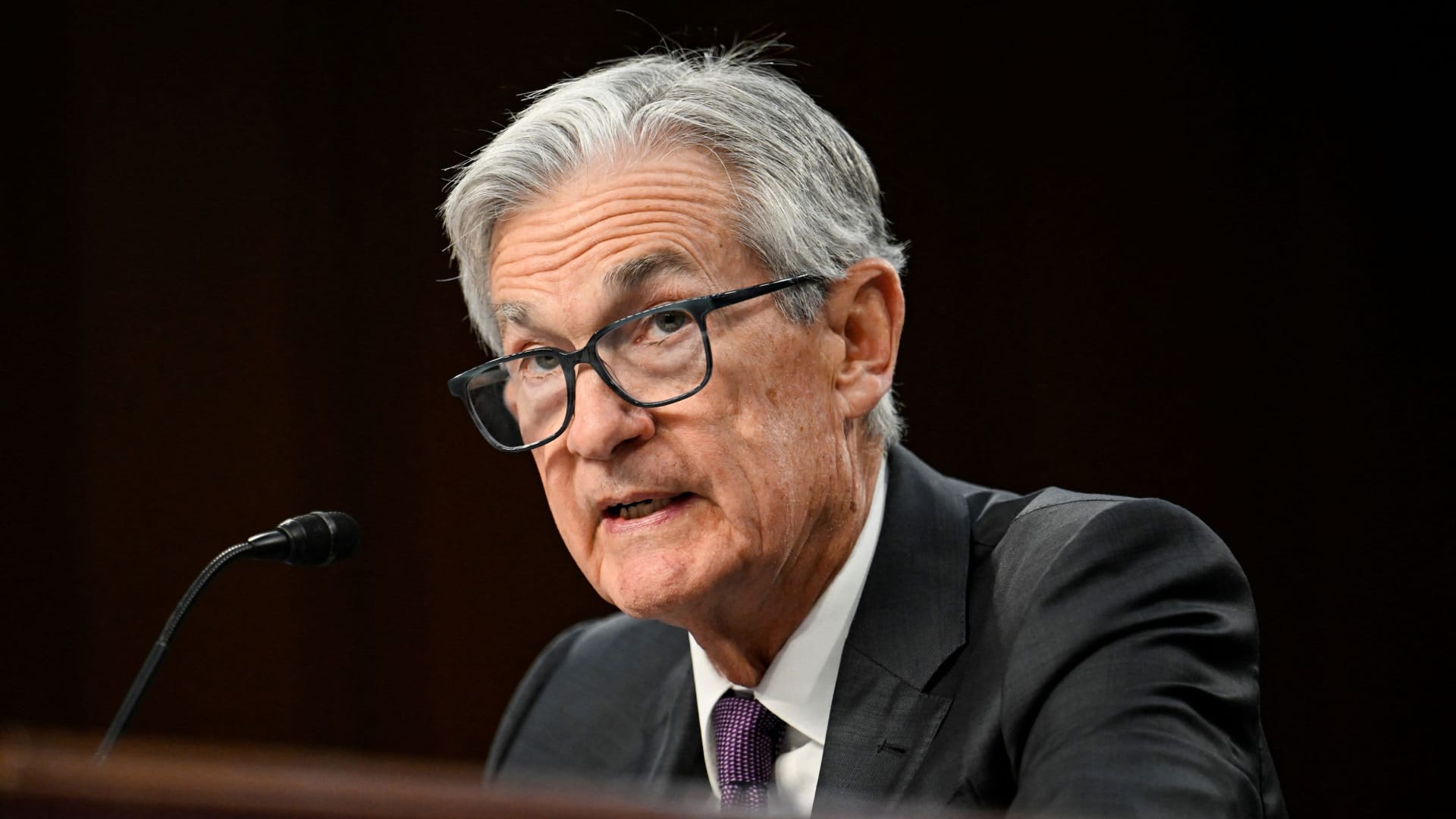U.S. Federal Reserve Chair Jerome Powell testifies before a Senate Banking, Housing and Urban Affairs Committee hearing on “The Semiannual Monetary Policy Report to the Congress,” at Capitol Hill in Washington, U.S., Feb. 11, 2025.
Craig Hudson | Reuters
NEW YORK — Federal Reserve Chairman Jerome Powell said Friday that the central bank can wait to see how President Donald Trump‘s aggressive policy actions play out before it moves again on interest rates.
With markets nervous over Trump’s proposals for tariffs and other issues, Powell reiterated statements he and his colleagues have made recently counseling patience on monetary policy amid the high level of uncertainty.
The White House “is in the process of implementing significant policy changes in four distinct areas: trade, immigration, fiscal policy, and regulation,” he said in a speech for the U.S. Monetary Policy Forum. “It is the net effect of these policy changes that will matter for the economy and for the path of monetary policy.”
Noting that “uncertainty around the changes and their likely effects remains high” Powell said the Fed is “focused on separating the signal from the noise as the outlook evolves. We do not need to be in a hurry, and are well positioned to wait for greater clarity.”
The comments seem at least somewhat at odds with growing market expectations for interest rate cuts this year.
As markets have been roiled by Trump’s shifting positions on his agenda — specifically his tariff plans — traders have priced in the equivalent of three quarter percentage point reductions by the end of the year, starting in June, according to the CME Group’s FedWatch gauge.
However, Powell’s comments indicate that the Fed will be in a wait-and-see mode before mapping out further policy easing.
“Policy is not on a preset course,” he said. “Our current policy stance is well positioned to deal with the risks and uncertainties that we face in pursuing both sides of our dual mandate.”
The policy forum is sponsored by the University of Chicago’s Booth School’s Clark Center for Global Markets and included multiple Fed officials in the audience. Most central bank policymakers lately have said they expect the economy to hold up and inflation to fall back to the Fed’s 2% goal, with the rate climate still unclear as Trump’s policy comes more clearly into view.
In his assessment, Powell also spoke in mostly positive terms about the macro environment, saying the U.S. is in “a good place” with a “solid labor market” and inflation moving back to target.
However, he did note that recent sentiment surveys showed misgivings about the path of inflation, largely a product of the Trump tariff talk. The Fed’s preferred gauge showed 12-month inflation running at a 2.5% rate, or 2.6% when excluding food and energy.
“The path to sustainably returning inflation to our target has been bumpy, and we expect that to continue,” Powell said.
Fed Governor Adriana Kugler, who was not at the forum, said in a speech delivered Friday in Portugal that she sees “important upside risks for inflation” and said that “it could be appropriate to continue holding the policy rate at its current level for some time.”
The remarks also came the same day that the Labor Department reported a gain of 151,000 in nonfarm payrolls for February. Though the total was slightly below market expectations, Powell said the report is more evidence that “the labor market is solid and broadly in balance.”
“Wages are growing faster than inflation, and at a more sustainable pace than earlier in the pandemic recovery,” he said.
Average hourly earnings rose 0.3% in February and were up 4% on an annual basis. The jobs report also indicated that the unemployment rate edged higher to 4.1% as household employment dipped.

 Blog Post1 week ago
Blog Post1 week ago
 Economics1 week ago
Economics1 week ago
 Finance1 week ago
Finance1 week ago
 Economics1 week ago
Economics1 week ago
 Economics1 week ago
Economics1 week ago
 Personal Finance1 week ago
Personal Finance1 week ago
 Accounting1 week ago
Accounting1 week ago
 Economics1 week ago
Economics1 week ago










